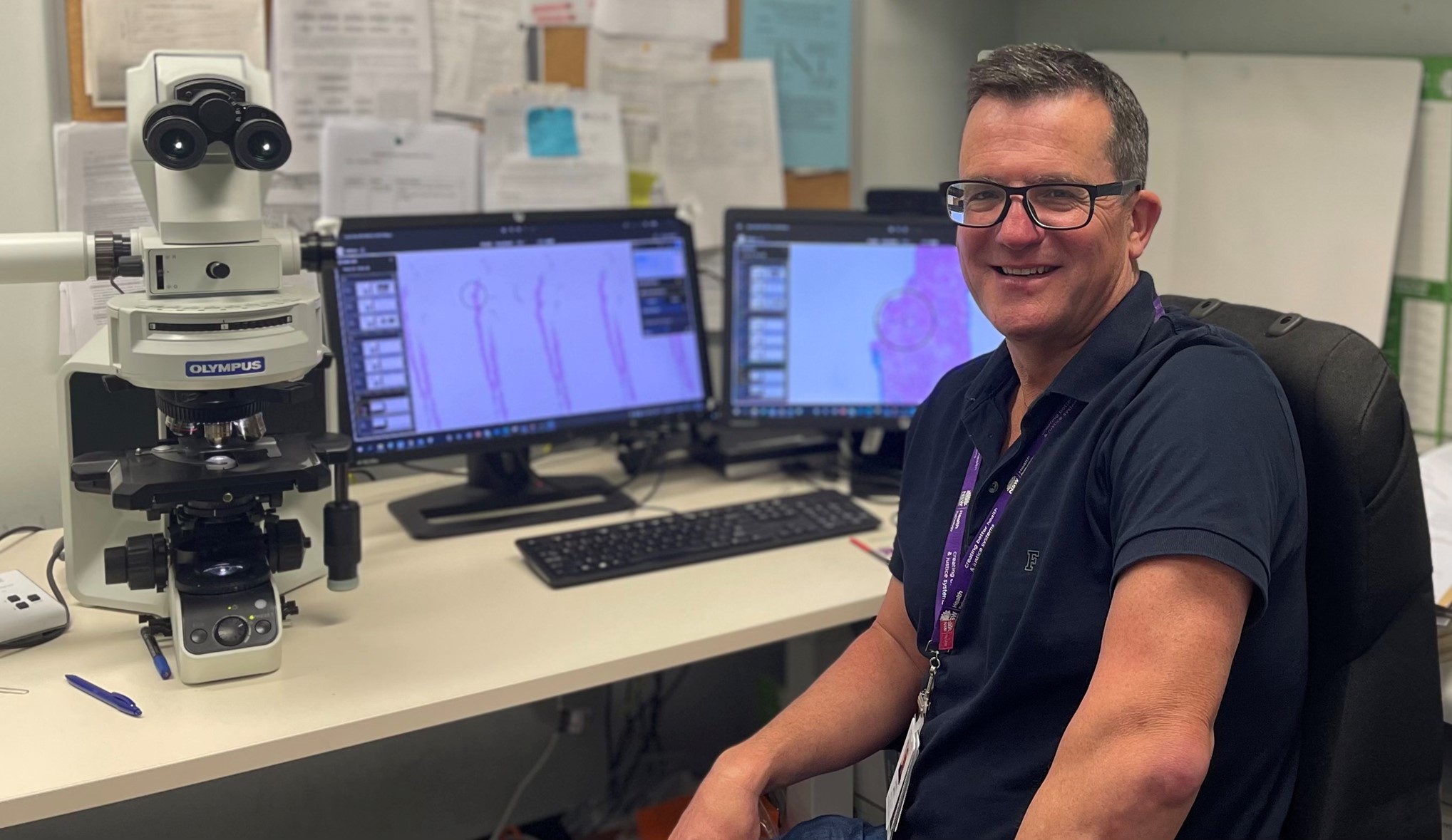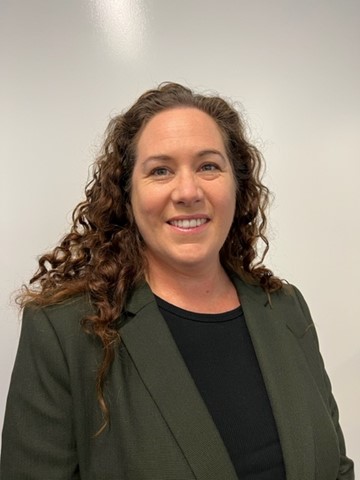Media Resources & Contact

In Associate Professor Ewan Millar’s vision for the future of pathology in NSW, the skills, experience and expertise of Anatomical Pathologists is backed by powerful technology.
In the near future, Anatomical Pathologists – doctors who study body tissue and cells to diagnose diseases like cancer – will scrutinise digital slides rather than traditional glass slides to routinely search for the smallest abnormalities in body tissue samples.
Ewan, a Senior Staff Specialist Histopathologist with NSW Health Pathology, based at St George Hospital, believes it is likely Artificial Intelligence (AI) will take on the role of ‘Pathologist’s assistant’, picking up on subtle pixel patterns that flag tissue samples for the doctor’s attention and further investigation. Ultimately, combining the pathologist’s expertise and skill with advanced tech could revolutionise the diagnosis and understanding of diseases, and improve patient care and outcomes.
With enough development, the AI would also go one step further to identify biological markers, or ‘biomarkers’, which indicate changes in tissue on a molecular level, not visible to the naked eye. These biomarkers will not only help diagnose disease, such as cancer, but help doctors understand a patient’s potential response to targeted treatment.
It’s an ambitious vision, but one Ewan’s happy to chip away at thanks to a Researcher Exchange and Development within Industry (REDI) Fellowship.
Under the fellowship, which aims to connect researchers with industry, Ewan is in the midst of a two-year, part-time project with Paige, a New York-based global leader in Artificial Intelligence-based diagnostic pathology software. They market the first and only AI product to detect prostate cancer approved by the US Food and Drug Administration (FDA). The AI is trained to identify subtle pixel patterns in the tissue to accurately predict the presence of prostate cancer, and even map where in the prostate it is located.
Under the REDI Fellowship, Ewan is assisting Paige to develop similar AI products for breast cancer and breast cancer lymph node spread. It is a dream role Ewan relishes.
“This REDI Fellowship opportunity to work with Paige’s team of experts in AI is unrivalled,” Ewan said. “AI can really transform the way pathologists work in the future, including right here in NSW.”
While the words ‘Artificial Intelligence’ can be anxiety-inducing in medical circles, Ewan explains AI is complimentary to traditional Anatomical Pathology and will not replace human pathologists.
“It’s like having a second pair of eyes, or a good trainee pathologist by your side,” he explains.
“Pathologists can look at hundreds of slides a day. AI can run algorithms that double check the slides and can flag specific areas on the slides for the pathologist to concentrate on. By making the workflows more efficient, pathologists can concentrate on the most meaningful parts of their role.”
While AI can overcome the challenge of spotting abnormalities which are simply too difficult to detect with the naked eye, Ewan said it can also short-cut time-consuming, manual tasks such as estimating the location of small, difficult to find tumours.
“Finding cancerous tissue can be time-consuming,” Ewan admits. “Some work can be like looking for a needle in a haystack, but the AI can be trained to recognise pixel patterns. For example, pathologists may look at up to 75 slides from one patient’s prostate core biopsies to find a tumour no more than 1mm in diameter. The AI is capable of reviewing the slides within minutes, compared to the time it takes to review slides manually.”
For now, Ewan is putting in the hard yards, training the AI software to eventually give Anatomical Pathologists access to a powerful, accurate tool.
“We go through iterative cycles – train, test, review, work out what’s wrong, and repeat until the AI performance improves,” Ewan explains. “AI software must be close to 90 per cent accurate before it’s ready for further testing.”
While Ewan’s lending his expertise to several projects, most of his time is spent with the Biomarker team developing the next breakthrough in cancer diagnostics.
From his home in Sydney, in the comfort of his kids’ old gaming room, Ewan applies his pathologist eye to images used to train and validate Paige’s biomarker AI software. He reviews the digital slides and the results that the AI algorithms produce, then works closely with engineers to identify detection errors and painstakingly improve the software performance slide by slide. Every cancer type requires its own unique AI algorithm, which needs hundreds or thousands of slides to successfully train the software.
Using this same approach, Paige recently built start-up algorithms capable of detecting digital biomarkers for tumour mutations in breast and prostate cancer. It’s hoped, in the future, digital biomarkers could be used to screen tumour slides for specific molecular features within just a few minutes, to determine a person’s response to targeted treatments. This new method for monitoring disease tumour progression and treatment efficacy could potentially replace some existing expensive and time-consuming molecular tests.
The experience Ewan is gaining will provide critical knowledge to ensure digital transformation planning, underway at Anatomical Pathology for NSW Health Pathology, is AI-enabled for the future. It also provides important industry experience to further support his contribution to AI researchers at UNSW Computer Science and Engineering, where several PhD students are currently working on breast cancer pathology AI projects.
Ewan’s REDI Fellowship is supported and funded by MTPConnect’s $32 million Researcher Exchange and Development within Industry (REDI) initiative made possible by the Medical Research Future Fund (MRFF), providing industry experiences and skills development for early and mid-career researchers, clinicians, and innovators to develop an industry ready workforce keeping pace with the demands of a rapidly changing sector.

